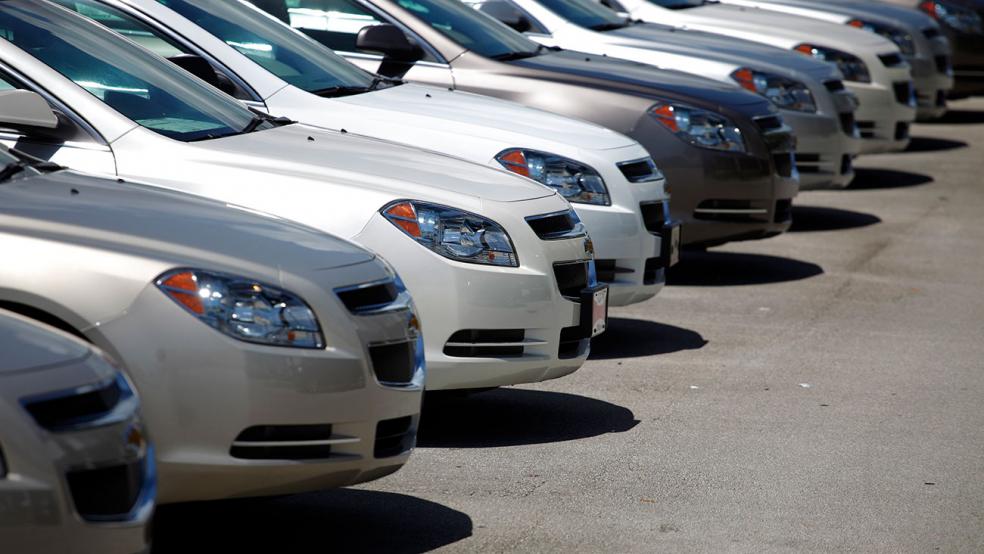As the price of new cars continues to rise, Americans are increasingly turning to leased vehicles, which allow them to have a late-model ride while keeping their monthly payments in check. In the third quarter of 2016, nearly one in three new vehicles were leased, a 10 percent increase over the previous year, according to Experian. “Leasing is particularly popular with younger drivers who have a different sense of ownership and change cell phones every few years,” says Phil Reed, an automotive writer with NerdWallet.
Just like a loan, the terms of a lease are up for negotiation along with the price of a car. Follow these steps if you’re considering a lease to make sure you’re getting the best possible deal:
Related: The 15 Best Cars of 2017
1. Make sure you’re a good candidate for a lease.
In general, buying a car rather than leasing it more economical over the long-term, and it’s one that gets better the longer you hold onto the car. That’s because you’ll eventually pay off your car loan (ideally in five years or less) and have a vehicle that still has some trade-in value. Buying a car also gives you the flexibility to sell the vehicle whenever you want, drive it without worrying about the accumulating mileage, and the ability to decide whether you want to pay for potentially pricey cosmetic damage.
However, if you don’t use your car to commute, and you like having a brand new vehicle every few years, you’ll spend less on monthly lease payments than you will buying multiple new cars. “Leases are also good for people who are interested not only in the performance of a vehicle but also in having the latest technology,” says Scot Hall, executive vice president of SwapaLease.com, a site helps match people who want to get out of their lease with someone who’d like to take it over. “People are OK with having a monthly expense if it allows them to have the latest technology in their car, and the newest safety devices.”
In general, you’ll need at least average credit to qualify for a lease. Use this Cars.com calculator to get a ballpark of the costs of buying versus leasing a specific vehicle.
Related: GM, Toyota Says U.S. Rules Limiting Self-Driving Cars Need to Be Eased
2. Make sure the car is a good candidate.
Since your monthly payment is based on the residual value of the vehicle when you return, cars that hold their value the longest make the best leases. Check out Kelley Blue Book’s Best Resale Value Awards to see which cars might top this list.
Some experts also recommend leasing rather than buying electric cars, since the technology is advancing so quickly that models a few years old may quickly become obsolete.
3. Negotiate the price of the car first.
Before you go to the dealer spend some time online researching the MSRP of the model you’d like and checking places sites like TrueCar to get a sense of what they’re selling for in your area. Take a test drive and nail down a price with the dealer before you mention that you want to lease the vehicle.
And do your homework. “Whether you’re buying or leasing… spending a few hours online could save you thousands of dollars,” says Michael Harley of Kelley Blue Book, which also offers a pricing guide.”
Related: The Next Financial Bubble? Auto Loans Soar as Delinquencies Rise
4. Don’t overpay your drive-off fee.
Similar to a down payment for a financed purchase, the drive-off fee is the cash you pay up front on a lease. The higher your drive-off fee, the lower your monthly payment will be. Given that the car will start to depreciate as soon as you leave the lot, you want to put as little money down upfront as possible.
If the car is stolen or totaled early on in the lease, you’ll still owe for the remaining payments, and the amount owed may be than the insured value of the car. Gap insurance, included in most leases, will help cover the outstanding payments, but you’ll never get back the money paid for that drive-off fee. (If gap insurance isn’t included in your lease, your auto insurer may have a policy you can purchase.)
5. Stick with a three-year lease.
Dealers are increasingly offering longer-term four or five years leases, which can make a significant difference in your monthly payments. Avoid those deals, even if it means buying a slightly cheaper car.
Most manufacturers’ warranties expire after the first three years. If you lease a car for longer than that, you’ll be on the hook for anything that goes wrong after the warranty expires. From a financial perspective, you don’t want to pay for a pricey new transmission or air conditioner just a few months before you have to return the vehicle to the dealer.
Related: Honda, Hitachi Automotive to Form EV Motor Joint Venture
6. Be conservative about estimating your miles.
Most advertised leases include an allotment for 10,000 per year, but you can also get a deal that allows you to drive 12,000 or 15,000 miles per year. If you go over that amount, you’ll have to pay the penalty to the dealer, usually about 15 cents per mile, which can add up quickly. You’ll be better off paying a little bit extra in your monthly payments for more allotted miles than paying the penalty on the backend.
7. Have an emergency fund.
Take some of the money you’re saving on lower lease payments and set aside. While mechanical difficulties with the car are typically covered by the warranty, you’ll be responsible for fixing any damage to the interior or exterior of the car, and may have to pay for new tires if the tread has worn down while you’ve driven the car.





